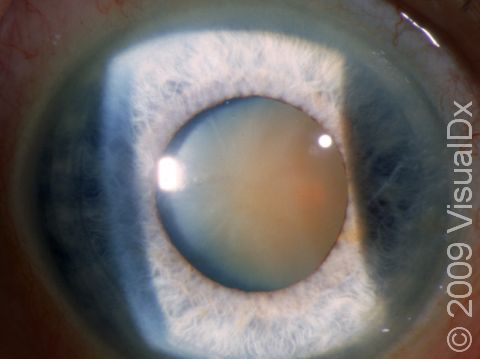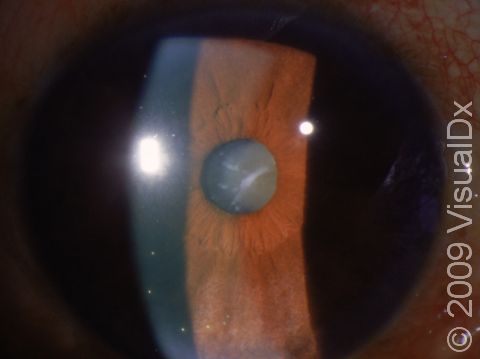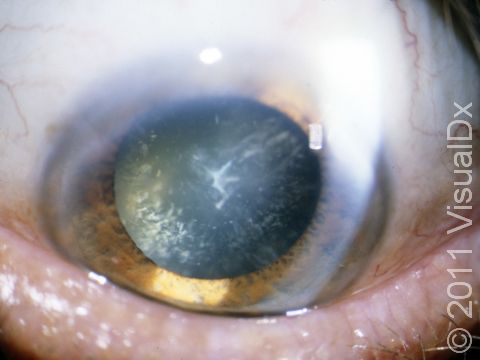Cataracts
A cataract is any clouding of the human lens. This clouding can cause a reduction in vision. The lens is composed of protein and water structured to allow light to clearly pass through. Changes to the structure of the protein result in a cataract. The changes in vision associated with a cataract depend upon which part of the lens is affected.
Who's At Risk?
Normal aging of the lens results in cataracts, but the age that this occurs is variable. There are many forms of cataracts (age-related, congenital, secondary, and traumatic), so all age groups can be affected. Children can be born with cataracts, and seniors may live into their 90s and still have very little cataract change and, therefore, little effect on their vision.
Signs & Symptoms
Only when the cataract becomes dense enough can one see it with the naked eye. Since the lens is located behind the colored part of the eye (the iris), one has to look in the pupil to see if there is any change. Typically, the lens affected by the cataract will appear gray, gray/white, or yellow/tan and, rarely, the lens will be pearly white in appearance. Suspect a cataract when:
- Vision is cloudy, blurry, or there are multiple images.
- Glare is bothersome, such as from headlights or street lights.
- Night vision seems reduced.
- Changes in glasses prescriptions are needed frequently.
- One has trouble judging distances – such as missing steps or having difficulty parking a car.
- Color vision is altered, in that colors are faded or shades of color are difficult to discern.
Self-Care Guidelines
There are no proven ways to prevent cataracts, but there are several things you can do that may affect the development of cataracts.
- Avoid smoking.
- Use sunglasses with UV protection.
- Follow a healthy lifestyle with diet and exercise.
- Avoid long-term exposure to X-rays.
- Avoid alcohol abuse.
- Maintain strict control of diabetes if applicable.
- Use of anti-oxidant vitamins may slow the development.
The side effect of some medications is the development of cataracts, such as long-term use of steroids at high enough levels. Additionally, certain general diseases, such as diabetes, are associated with cataracts.
Treatments
The definitive treatment for cataracts is surgery. Typically, the cataractous lens is removed and an artificial lens is implanted into the eye.
Visit Urgency
When vision is affected enough to interfere with your life and lifestyle, seek professional care. For example, if you are changing your glasses frequently due to cataracts.
References
Yanoff Myron, Duker JS, eds. Ophthalmology. 2nd ed, p. 275. St. Louis, MO: Mosby, 2004.
Last modified on October 10th, 2022 at 3:36 pm

Not sure what to look for?
Try our new Rash and Skin Condition Finder




